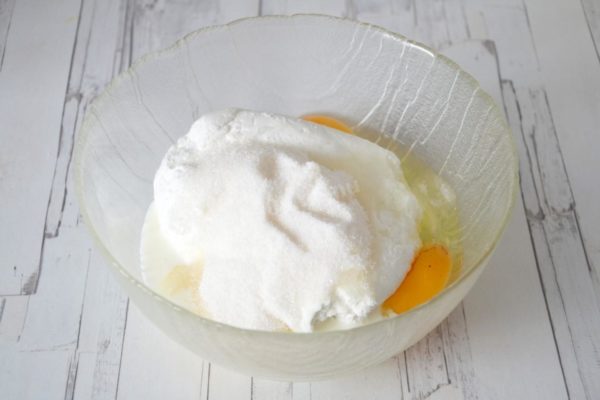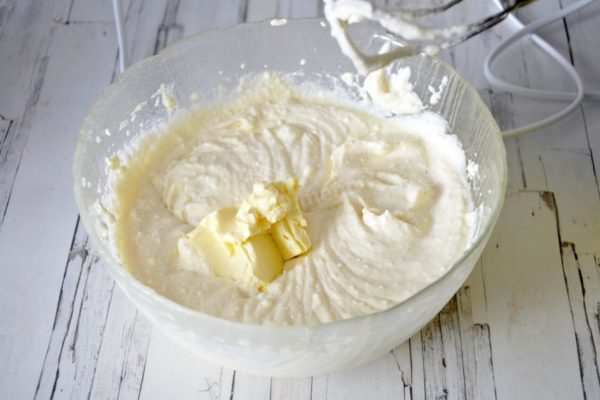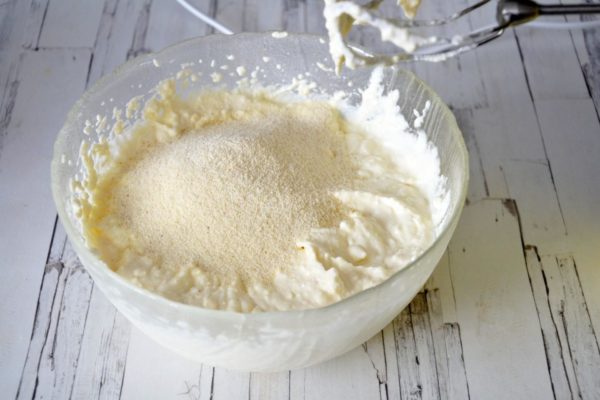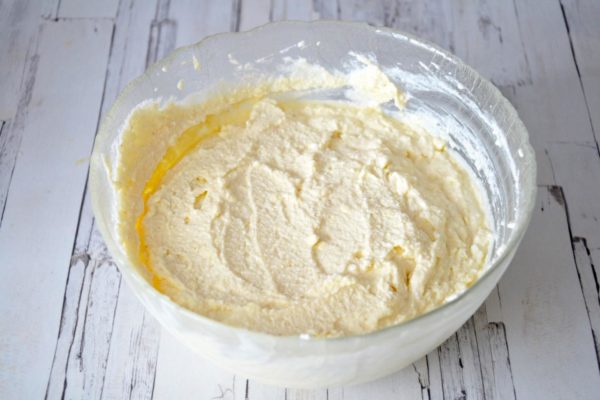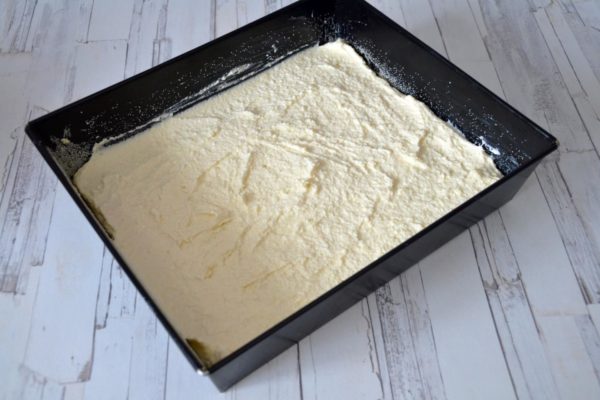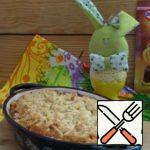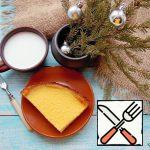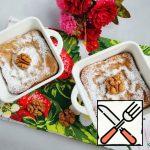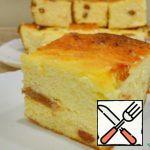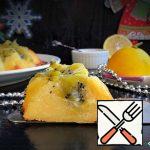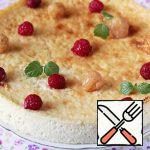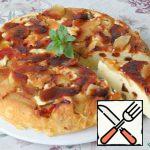- How to prepare a cottage cheese casserole like the one from kindergarten? Gather all the necessary ingredients. Make sure that the cottage cheese, milk, butter, and eggs are all at room temperature. If you're wondering which type of cottage cheese to use, any fat content will do, but a richer cottage cheese will result in a tastier casserole. If you have low-fat cottage cheese, consider adding a couple of tablespoons of sour cream, kefir, or milk to enhance the flavor. You can either push the cottage cheese through a fine sieve or blend it to ensure it's smooth.
- In a suitably sized container, combine the eggs and sugar. To achieve a light and fluffy casserole, use an electric mixer to beat the mixture until it forms a stable, airy foam. Then, add the mashed cottage cheese and milk. Continue beating until the mixture is smooth. You can find more details on selecting and preparing cottage cheese in the article linked at the end of the recipe.
- Allow the dough to rest for 15-30 minutes, allowing the semolina to swell. Why use semolina instead of flour? Baking with semolina results in a more tender and fluffy texture. The casserole will hold its shape and remain intact after baking. Preheat your oven to 180°C (350°F) at least 10-20 minutes before baking. Transfer the dough to an appropriately sized baking dish; mine measured 25 by 28 cm (approximately 10 by 11 inches).
- Bake the casserole for approximately 30 minutes, or until it turns golden brown. Adjust the baking temperature according to your oven's characteristics; it may run slightly cooler or hotter than the specified temperature (typically between 175-200°C or 350-390°F). Allow the finished casserole to cool before slicing and serving. Enjoy your meal!
I remember enjoying this delicate casserole back in kindergarten, and the taste still lingers in my memory. They used to serve it with various sauces, such as chocolate, vanilla, milk, and sometimes condensed milk. You can customize this recipe by adding black currant berries, raspberries, or finely chopped dried apricots to the dough. If you choose to use dried fruits, it's a good idea to pre-steam them by soaking in hot water for 10-15 minutes.
For vanilla sauce, follow these steps: Pour 350 ml of milk into a saucepan and bring it to a boil. In a separate bowl, mix 2 eggs, 50 g of sugar, and 10 g of flour. Gradually add a small amount of hot milk to the egg mixture, stirring quickly with a fork or whisk to prevent curdling. Then pour the egg-milk mixture back into the saucepan with the rest of the milk. Cook the sauce over very low heat, stirring constantly. Bring it to a boil, but do not let it boil. Once the sauce thickens, remove it from the heat and add vanilla or vanilla sugar according to the instructions. Mix well, and your vanilla sauce is ready!
It's crucial to choose high-quality cottage cheese for successful results in your casserole or filling. The quality of the cottage cheese directly affects the consistency, taste, and final outcome of your baking.
To check if the casserole is ready, wait until a light golden crust forms on the surface. Then, use a skewer to pierce the casserole in several places. If the skewer comes out clean, the casserole is ready.
Keep in mind that ovens can vary, so the temperature and cooking time may differ from what's indicated in the recipe.
To achieve a fluffy and delicate casserole, consider the size of the baking dish you choose. Smaller, higher-sided dishes will result in a thicker layer of cottage cheese mixture for baking, yielding a taller finished casserole.
You can use any heat-resistant baking dish for this recipe. If you opt for a silicone mold, there's no need to grease it with butter or margarine. However, it's a good practice to lightly grease metal, ceramic, or glass baking dishes with vegetable oil to prevent sticking and burning.


